This carte-de-visite has me stumped. I assumed the girl in the image would be easy to identify, but so far that hasn’t been the case. At first I thought she was holding an oar, but a rower I contacted told me it was a paddle. Well, that’s a start! Actually, I think the most interesting thing about the portrait is her remarkable outfit. Have you ever seen a suit like it?
The carte was made by photographer Charles Knight (1853-?), who operated studios on the Isle of Wight from about 1875 until at least 1898. By 1901 he had moved his family to the mainland and set up a studio in Aldershot. His studio was at the address on the back of the photo, 6 Royal Victoria Arcade in Ryde, from about 1875 to about 1880.


I hope someone can find some more information about this unusual portrait. Feel free to share your thoughts!

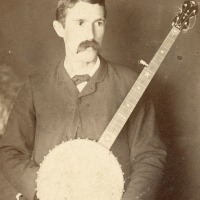
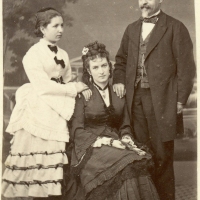
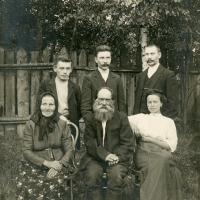
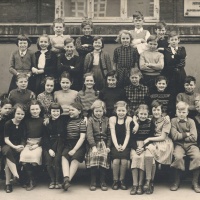
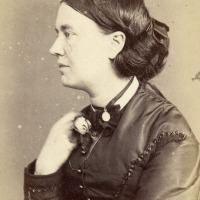
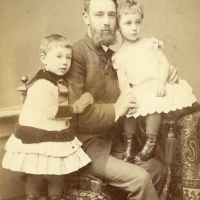
Perhaps she went cockle picking? Although I would think that she would have been portrayed with a more characteristic piece of equipment.
LikeLiked by 2 people
I had to look up “cockle picking.” If we do that here in the States, it must be called something else! 😀
LikeLiked by 1 person
It is a very intriguing photo! She has the steely look of a competitor that’s for certain. It’s hard to imagine getting anywhere near a canoe in that dress. I wonder if the skirt was detachable and she wore leggings underneath, donning a skirt for modesty’s sake when on land? Sports such as canoeing or kayaking seem incongruous with the Victorian era, especially for women.. I will await further comments with interest!
LikeLiked by 3 people
I was just reading that kayaks were introduced to Britain and Europe in the mid-1800s, but I haven’t found any mention of women kayaking competitively until the 20th century. I wonder if this photograph was commissioned by a local shop to promote the sport to visiting holidaymakers? In that case the identity of the wearer might be lost. More questions than answers! 🙂
LikeLiked by 1 person
I thought the paddle looked like it was for a canoe or a kayak as well.
LikeLiked by 2 people
It’s possible this CdV was somewhat common at that time since the Isle was a recreational spot, not only for Queen Victoria’s family but for many families. (According to Wikipedia) This photographer was quite clever in choosing the Isle for his business, and this photo could be of a royal, aristocrat, or a commoner wishing to have a souvenir of their outing on the waters. I’m guessing since it was ‘found’ the photo was of a ‘commoner’. You’re right about the dress. It’s modest for water sport but unusual otherwise. Thank you for introducing me to carte-de-visite. It must have been a precious memento for somebody once upon a time.
LikeLiked by 2 people
The carte-de-visite format originated in France and quickly spread around the world, becoming wildly popular. (The term can be hyphenated or not. I prefer to hyphenate it as a matter of style.) CDVs were inexpensive, relatively durable, and easy to exchange with friends. They were also highly collectible. Photographers would display CDVs of local or national celebrities in their studio windows for sale. This one could have been sold in that way. I’d love to know!
LikeLiked by 2 people
Interesting photo, sounds like he was a well respected photographer too from your link to him.
LikeLiked by 2 people
He definitely was. He took a photo of Queen Victoria smiling which became very popular. You probably saw it if you went to that link. I wrote to the owner of that website but didn’t get a response. Same with the Historic Ryde Society.
LikeLiked by 2 people
Interesting photo! Sounds like she may have been a kayaker: https://kayakguru.com/oar-vs-paddle/
LikeLiked by 3 people
Yes, I think that’s the most likely scenario, but I can’t prove it!
LikeLiked by 2 people
Wonderful photo. What A steely gaze! My thoughts go to kayaking as well. But the dress would be difficult to fit, I suppose…
LikeLiked by 2 people
You make a good point, her skirt would be bulky in a small craft. On the other hand, sea kayaks are roomier than whitewater kayaks. The cuffs of her sleeves look very sturdy, to protect her forearms from hitting the sides of the boat.
LikeLiked by 2 people
She is amazing. I hope she never fell overboard. That costume would drag her right down.
LikeLiked by 2 people
I hadn’t thought of that! They could have added buoyancy to it. It was certainly a great look!
LikeLiked by 1 person
From what I could find online, it seems to be a kayaking paddle. Even though they don’t mention kayaking specifically, the oldest rowing club on the Isle of Wight is in Ryde, which is where your photographer’s studio was based, too. Maybe email and ask them? Here’s their history page, and there’s a contact link at the top of the window. https://ryderc.org/club-history.
LikeLiked by 2 people
I’ll do that! I emailed a couple of organizations on IOW but didn’t get a response. Maybe I’ll have better luck this time. Thank you!
LikeLiked by 2 people
I think people are taking longer to reply at the moment. Some of these places have had to close down, but I expect this one’s still open, though not sure if they’re allowed to meet yet!
LikeLiked by 2 people
A very interesting and sturdy looking outfit. Maybe she was one of the first women to take up kayaking.
LikeLiked by 2 people
Wouldn’t that be interesting to find out!
LikeLiked by 2 people
The costume and shoes look sturdy enough for hiking but that paddle says water. Perhaps she was a champion kayaker. And if the photographer photographed Queen Victoria, perhaps she was royalty. Someone commented that the heavy skirt might have been removed when she was in a kayak. Unusual!
LikeLiked by 2 people
Yes, quite unusual. She appears to have heavy pants (?) on under a heavy skirt. Also sturdy cuffs to protect her forearms from hitting the boat. The more I think about it, the more I think the outfit was better suited to paddling an open boat than to kayaking.
LikeLiked by 1 person
Indeed, this suite is something speciaal!
LikeLiked by 1 person
Thank you, Greta!
LikeLiked by 1 person
A thought: she was an early kayaker, but being photographed in appropriate clothing for that endeavor would have been too immodest or informal, so as a compromise, she’s wearing something less indicative of boating but holding a kayaking paddle.
I think the hat she’s wearing is your best secondary clue. It’s unusual. Can you trace it’s style and provenance?
LikeLiked by 2 people
Her hat is certainly distinctive to our 21st-century eyes, but I don’t know if it was unusual at that time. That would be interesting to find out. As you suggest, her skirt may not have had much practical value in a boat. On the other hand, a woman in pants would have raised a lot of eyebrows in the 1870s. This may be a case of social mores outweighing practical considerations.
LikeLiked by 1 person
Girls gone wild, 1875
LikeLiked by 3 people
Ha! The photo certainly would have subverted the ideal of domestic femininity of that time.
LikeLiked by 1 person
So intriguing! I hope you’re able to find out more and can give us an update 😊
LikeLiked by 2 people
I hope so, too! I’ve had this photo at least two years, and kept putting off sharing it because I hoped to find out more about it first. Finally I decided it was time to admit defeat and see if someone else might have better luck. Thank you, Sandra! 🙂
LikeLiked by 1 person
Can you imagine if people then used that paddle for kayak and wore that while doing it? Haha!
LikeLiked by 2 people
It’s hard to imagine! Do you like to kayak? I’ve done it a few times and enjoyed it. I’ve done more canoeing than kayaking.
LikeLiked by 1 person
I wonder what that lady is up to. I have not gotten on a canoe. It sounds nice though. I competed in an international dragonboat contest.
LikeLiked by 1 person
I am thinking that she may be in her best working clothes, those boots mean business..
So perhaps she operated a small river ferry. These were common in the Victorian countryside, sometimes operated by the owners of an Inn on one bank. Ferryboat Inn is a common pub name. Not suggesting that she would have crossed the entire Solent, of course!
I imagine her standing up in the stern of a small boat with a single rowlock, rowing the paddle from side to side. There are two collets? along the shaft of the paddle, so either end could be used in the rowlock. Speculation, but there are many examples of Victorians in their working clothes depicted on cdvs.
LikeLiked by 2 people
Michael, you make excellent points. I wondered about those two rings on the shaft of the paddle and what purpose they might have served. I wondered if the paddle could have been attached to the boat with them and used like an oar. Now I’ll need to look into the history of ferries and the different designs that existed! Here in the States, we had “poled” ferries which were attached by two cables (one at each end of the ferry) to a single metal cable which ran from one side of the river to the other. The ferryman would use a pole to guide the ferry back and forth across the river, letting the current do most of the work. There must have been a variety of other ferry designs which didn’t involve cables.
LikeLiked by 1 person
Looking at Ordnance Survey 25 inch maps on the National Library of Scotland website, I can see two minor ferry locations on the River Medina, which flows towards Cowes.
The most promising is associated with the Folly PH (public house), with a ‘landing stage’ on the river. The pub was located opposite the ‘Werrar Brick Works’ on the other bank, so plenty of thirsty customers on the other side. See 25 inch sheet XC 10 if you can find it.
Anyone who has seen the charming Brit film ‘The History of Mr Polly’ may recall John Mills operating a similar ferry!
LikeLiked by 2 people
I couldn’t figure out how to navigate the website to get to the survey map, but I googled “Werrar Brick Works Folly Public House” and found an interesting report from 2007, “Historic Environment Audit of the Medina Valley Estuary Isle of Wight” (pdf). It mentions commercial oyster farming in that area. It also refers to both a Folly Public House and a Folly Inn, which I assume are the same structure (called the Folly Inn today). From page 49 of the report:
“The Folly Inn (HER 2797) itself is named after a barge which used to be ‘the scene of high entertainment amongst the bon vivants of an earlier age’. In 1792 the barge had been hauled up on to the shore and built upon. Its position is marked on the Murdoch Mackenzie chart of 1783.”
LikeLike
Yes, the Folly Inn is still there!
On the Pubwiki site there is a list of early publicans, taken from trade directories. The earliest, in 1885, was a Mrs Ellen Trivett. Perhaps only 10 years after the date of this image…
I wonder if she carried Charles across the water?
LikeLiked by 1 person
Looking at census records, Ellen Hort Trivett was born between 1835 and 1839, so she would have been a little too old to be this girl (c. 1875). In the 1881 census, she was living with her husband and her husband’s niece, Ann Trivett, who was 8. Their street address was simply “The Folly.”
LikeLike
Fascinating photograph, Brad! I enjoyed reading the comments speculating about possible answers to the mystery. My immediate impression was that the costume reminded me of college sports team uniforms from that time period–but I don’t think that’s it.
LikeLiked by 1 person
Yes, or sort of like the full-body bathing costumes that people wore. But it isn’t one of those, either. Thank you, Liz!
LikeLiked by 1 person
It is puzzlement for sure!
LikeLiked by 1 person
The woman’s hat may be a phrygian cap or a tuque. The latter would certainly fit the same theme as a kayak paddle. It seems that her hair may be cut short under her cap, though it’s hard to tell.
She certainly seems somebody who is less than comfortable in the clothing she is wearing. She may well have been used to different, more rougher, maybe more masculine clothing. Again, this would fit with the one prop we can be sure of.
Note her right foot is raise at the front and resting on the heel. Almost like she’s balanced/braced for some reason. Maybe not to pose, but because she’s used to standing like that for some reason.
If I was to speculate I would suggest that she was a minor celebrity at the time, maybe from some exploit in North America (similar to Bessie Hall). Brought to England for a tour, this photograph might have earnt her a little money along with appearances. But that is only speculation and could be far wrong.
LikeLiked by 1 person
When I first saw this photo, I thought of Ida Lewis (1842-1911), the lighthouse keeper from Rhode Island, who sometimes posed for studio portraits holding an oar. But it isn’t Ida, and it probably isn’t Bessie Hall (1849–1930), unless we can find a record of her visiting Ryde. Anyway, your theory is excellent. The strange thing is that no other prints of this image seem to exist online, which makes me wonder if very few were printed or sold. On the other hand, I’m convinced that much of the history of photography can’t yet be found online, and it may simply be a matter of time before another example of the carte appears. Your thoughts about her clothing and pose add nuance to the discussion. Thank you for your insightful comments, Emma!
LikeLike
The rings on the paddle suggest kayaking rather than canoeing, but it’s clearly not a rowing oar. It’s always hard for me to imagine being in or on a boat in a costume like that, but after I did a quick search for ‘Victorian boating costumes,’ this one didn’t seem particularly odd. The paddle itself shows obvious signs of wear, so it may be her personal paddle: perhaps one that helped raise her to some degree of prominence.
LikeLiked by 1 person
Good point about the paddle looking well-used. Since there seems to be broad agreement about the paddle being suitable for kayaking, I should dig deeper into the early history of the sport. I think it became popular in some parts of the Continent, such as Germany, but I should see what other information I can find. Thanks, Linda!
LikeLike
Queen Victoria has a lovely smile in the link you provided! And, it seemed to me that Charles Knight almost specialized in photographing sporting events of the day. There were notes of horse races and a boating accident captured by him in photographs. I imagine that sort of photography would pose a great challenge in those days and yet he accomplished it to great renown. The young woman looks strong and very capable of managing whatever craft she might have enjoyed. Good for her! While her outfit seems cumbersome to us, it looks like the fabric might have some water resistance to it that could be of benefit. Whatever the case may be, I find her strength and purpose inspiring! 😊
LikeLiked by 1 person
You may well be right that Mr. Knight specialized in outdoor photography. The Isle of Wight was a popular destination for well-heeled holidaymakers, who would have spent much of their time engaged in outdoor pursuits.
Inspiring is the right word for this young lady! I wonder what effect this photo might have had on girls and young women around the country if it had been published widely. Would it have inspired some of them to take up kayaking or other sports, at a time when they were generally discouraged from doing so? One can only wonder. Great comments, Suzanne!
LikeLiked by 1 person
I wonder if she was a part of the local lifeboats.
LikeLiked by 1 person
That was actually my first theory, but I didn’t pursue it very far. I’ve only heard of lifeboats using oars. It’s possible a paddle would come in handy, depending on the kinds of hazards involved. Something to consider!
LikeLiked by 1 person